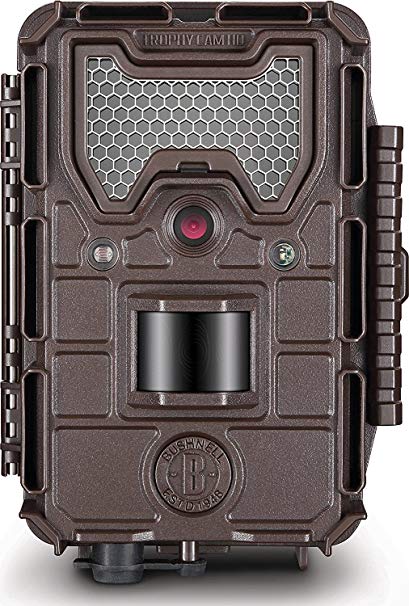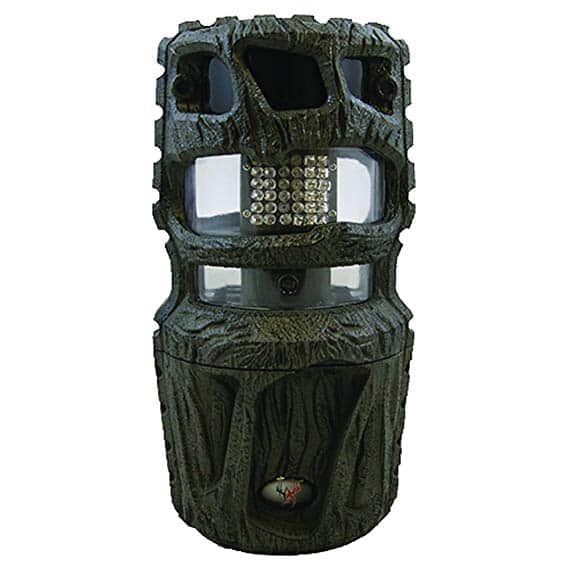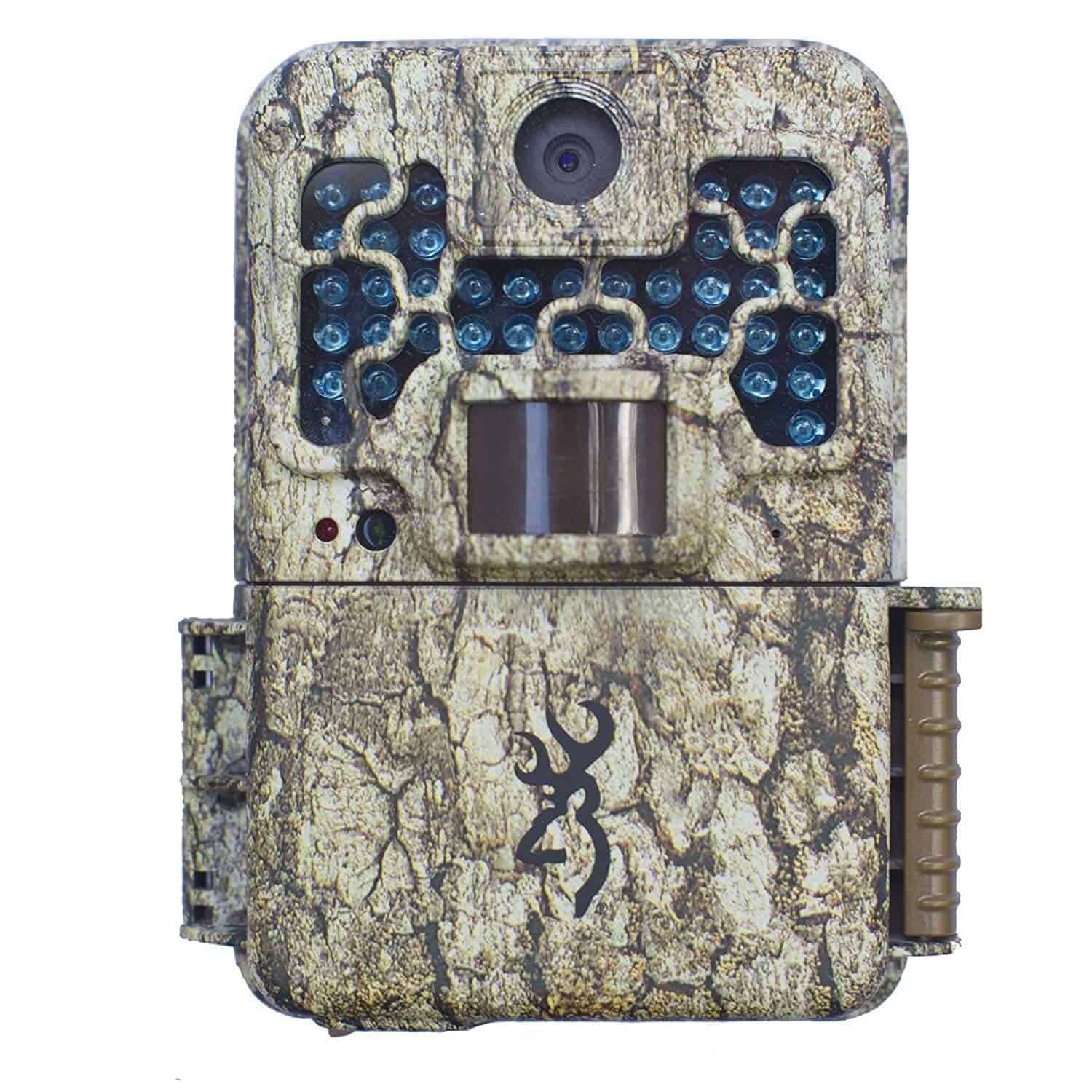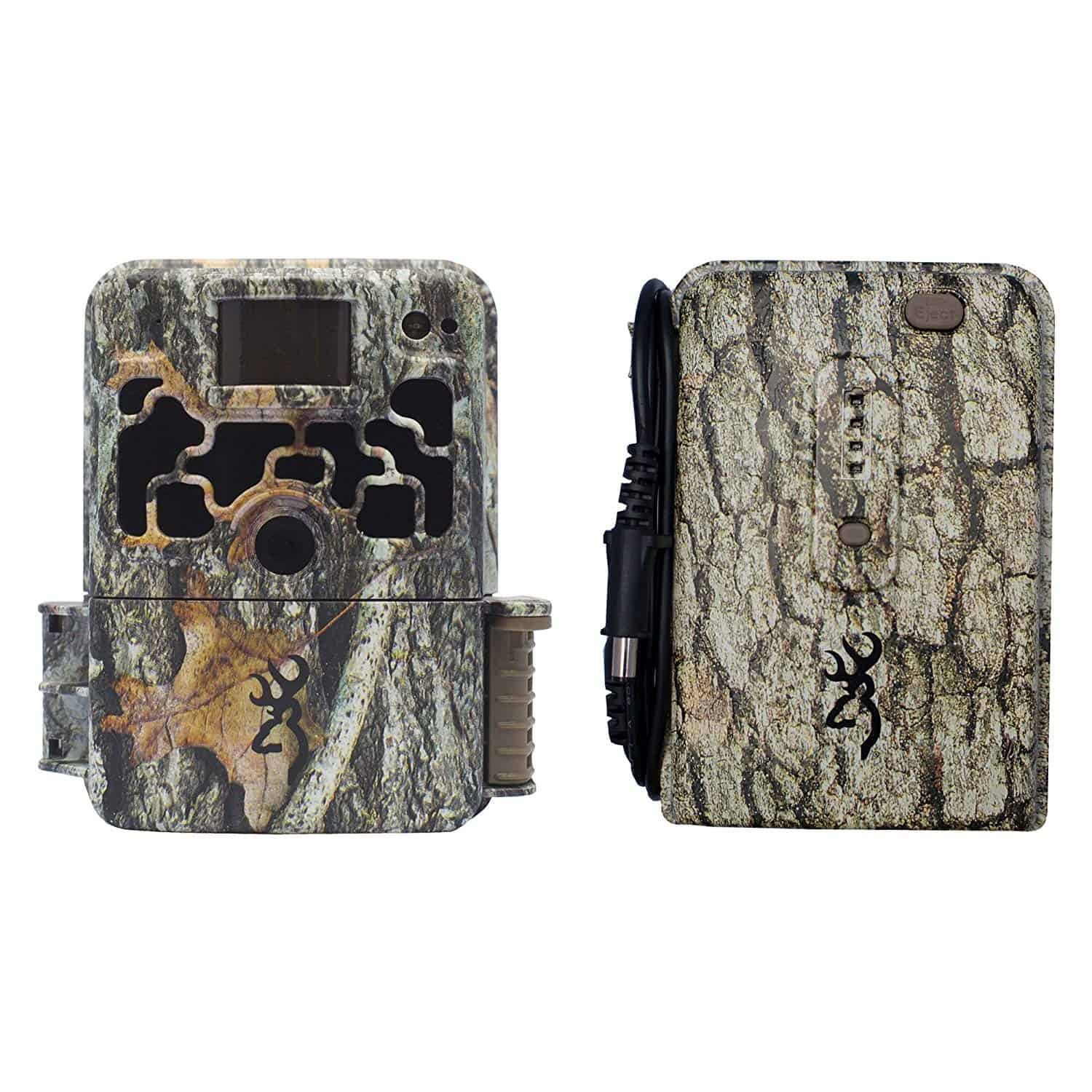Best Trail Camera Reviews for 2021 (Buyers Guide)
Our experts like to share product recommendations with you and hope you like them! Just to make you aware, CatchThemEasy may collect a small share of sales or other compensation from the links on this page.

Trail cameras or game cameras are simple, useful tools – “hunter’s best friend”, many say, but what do these devices actually do and who are they for? Even if you’re not too familiar with trail cameras, rest assure that you’ll find out absolutely everything you need to know right here. To put it simply, these hunting devices record images (photographs or videos) when objects move past them. But, that is not all these devices can do.
Let’s get straight to the point. Although picking the right camera greatly depends on your personal needs and preferences, some things are universal – that is, no matter what your budget is and regardless of how you intend to use the recorder, there is a hunting trail camera out there for you.
Let’s take a look at our picks and reviews of the best trail cameras on the market.
Top Rated Model Comparison Table
Image | Trail Camera | Megapixels | Range | Price |
|---|---|---|---|---|
14 | 20 Feet | |||
12 | 70 Feet |
Reviews of the Best Trail Cameras
Primarily meant for deer hunters (because it fires more pictures than any camera on our list), the aggressor is an eclectic combination of user-friendly controls and high-end features. And guess what – it doesn’t cost too much. This isn’t exactly a beginner camera, but intermediate users who want a powerful device will absolutely love it. The sturdy build is one of its strongest features, making the Aggressor one of the strongest and most durable recorders we’ve ever tested. It looks like a powerful piece of technology and that is exactly what it is.
With the resolution of 14 megapixels (video resolution: 1920 x 1080p) and highly efficient time lapse technology, which allows the user to pre-set intervals at which the device snaps images, the Aggressor performs even better than it looks and even experienced hunters will find it to be a powerful tool and a great hunting companion.
Staying true to their unique name, Wildgame Innovations have come up with a ground-breaking trail camera. The only bad thing about it is – it’s not for everyone’s pocket. However, the high price is most definitely reflected and justified in the design and the performance both. The 360’s strongest feature is the panoramic view option. Since the recorder rotates 360 degrees it allows the user to capture footage in a way they’ve never been able to before.
Simple, yet modern design and ease of use make the 360 the perfect camera for beginners, intermediate and advanced users alike. The device itself features 12-megapixel resolution and the 1.5-second trigger speed, even though not too fast (which is perfectly understandable, considering that the camera rotates), certainly gets the job done.
If you’re on a tight budget and looking for a great value for money beginner option, look no further than the Recon Force. This camera is incredibly user-friendly and it generally considered one of the simplest cameras deploy. Essentially, as soon as you turn it on it’s ready to capture imagines. Conceptually a no-nonsense, straightforward device, the Recon Force is, quite simply, the best budget trail camera today, at least when it comes to design. More about performance below.
Equipped with a powerful 10-megapixel camera and IR LED illumination and producing stunning 920 x 1080 HD video, the Recon Force performs wonderfully, capturing beautiful images and videos. However, although close to spectacular, considering the price, image quality is often thought to be this camera’s strongest feature, the fast .067 trigger speed is actually what takes it to another level. Definitely the best game and trail camera for the money, especially for beginners.
The Dark Ops is a multi-purpose trail camera with a twist. It has deserved its place on our list for a few reasons – it doesn’t cost much, it performs very well, it’s well built and, most importantly (some of our readers will love this) it is the best stealth trail night camera out there. Whether you’re a hunter or just want to record suspicious activity in your neighbourhood, the Dark Ops is the stand out stealth camera from the reviews you'l find anywhere. But what’s so unique about it?
What’s unique about the Black Ops is the fact that this is a no-glow recorder. This means the night flash of the Black Ops is invisible to the human eye. Even if you’re a hunter, concerned about other hunters or even animals seeing the red flash of the camera at night, this little device will definitely come in handy.
With a 10-megapixel resolution and a 0.4-second trigger speed, the Black Ops is a combination of good performance and stealth, army-like features.
#5. Bestok Game 12MP Digital Infrared Night Vision Outdoor
Bestok’s compact and unique wildlife Trail Cam deserves its place on our list because it is the perfect trail camera for intermediate and experienced users, looking to try something new. This 12-megapixel camera durable, waterproof and will survive in the wild, no matter what. It can perform in the most extreme temperatures, from -22°F to 158°F.
This is truly an ideal device for experienced users and definitely not something we’d recommend for beginners. It has a ton of useful features, but inexperienced hunters might have a hard time getting a hang of them. One of the things that stand out for this recorder is the price – it is very affordable and definitely won’t burn a hole in your budget. Relatively quick trigger time and great night performance make this Bestok’s model a highly recommended camera for more experienced game hunters.
Now that we’ve described and showed you our 5 best trail camera reviews as promised, we are going to retract a bit and go back to the beginning of our article. Many of you reading this are new to these devices and have no idea what to look for when purchasing one. Granted, there are some more experienced hunters and wildlife-lovers reading this too, but not all of us are tech-savvy.
That is why we are now shifting our focus on things to look for in trail cameras. What makes a “good” game recorder anyway?
Well, like we pointed out in the beginning, personal needs and preferences play a crucial role, but some things like battery life, trigger speed and picture quality must always be taken into consideration. After all, it’s much better to embark on this adventure prepared, than to buy the first camera that seems decent enough.
How to Buy the Best Trail Camera For Your Trails – Things To Pay Attention To
- Megapixels – As a general rule of thumb, more megapixels mean high quality, high resolution footage. Even though this is, in essence, accurate, megapixels don’t have to be the determining factor when it comes to picture quality. Many companies nowadays use the number of megapixels as a marketing tactic, but the best way to know how good pictures a certain trail camera takes are is too look for actual footage and read reviews online.
- Battery Life – Obviously, good battery life is absolutely crucial. Sometimes hunters place their cameras in areas with a lot of activity, which means the cameras snap a lot of photos – sometimes thousands of them, which drains the battery. In the end, the inexperienced hunter is often left with low quality footage. Tweaking the settings and adjusting them accordingly to the area is key, but a good battery foes a long way – always make sure to research about battery life before you reach for the wallet. After all you want the best long-lasting trail camera for your hunting!
- Photo Settings – This is where it gets tricky. Even the most experienced of hunters have a hard time mastering trail camera settings. These devices have become so advance and the industry itself is rapidly changing, that it’s sometimes hard to keep track of what’s going on. Make sure to pick a recorder that’s easy to use so you’re not overwhelmed with dozens of different features and settings. It is highly recommended that you experiment for a while, with every new trail device that you purchase, in order to find out what works and what doesn’t. User manuals are usually a good place to start. They’re concise, easy to read and straight to the point.
- Trigger Speed – High trigger speed is another thing trail camera manufacturers use to market their products, even though most of their potential customers aren’t even sure what trigger speed is. Simply put, trigger speed is the time between when the animal first walks into frame until the trail cam snaps a picture. In general, most trail devices nowadays take about a second or less to trigger.
- Infrared – As every experienced wildlife enthusiast knows, using traditional flash to snap photos at night is a no go. Not only does it scare animals off, but also attracts attention, which is definitely something neither hunters nor casual users want. Many people install trail cams at their gate or porch, especially if they’ve noticed suspicious things happening in their neighbourhoods – like vehicles being damaged, for example. Infrared cameras are able to snap photos stealthily and with minimal intrusion. In this day and age, some trail cams have a no-glow feature too, which makes them even less noticeable.
- Video – Since trail cameras are primarily meant for scouting, many hunters look forward to watching their game camera review footage. However, this feature often elevates the price of the recorder a bit, even though it’s much more common nowadays than before, so make sure to weigh in on the pros and cons of paying more for a trail camera just because it can record videos.
- Remote Access – Since cameras for trails are getting more and more advanced as time goes by, what was unimaginable a few years ago, is commonplace nowadays. Remote access is definitely one of those things. Some devices allow you to access photos via your smartphone – most of the time, you simply receive photos to your email inbox. However, there is a catch. Naturally, these recorders usually cost more, but more often than not there is a monthly fee the users have to pay to activate the remote access feature. Of course, if you’re hunting or scouting in a remote location, you might not even have access to internet or reception, so that is definitely another thing to consider. The bottom line is: even though a cool feature, remote access is simply not worth it for everyone.
How to Use a Trail Camera – Tips and Tricks
If you’re reading this, chances are, you’re pretty familiar with trail camera reviews and the way they operate and how they’re used. If you’re not too sure about that either, we recommend you watch the short video below:
*credit to the Simon King Wildlife channel for this video
Even experienced users sometimes overlook important things regarding using and maintaining their cam, that they end up getting short-changed – they end up with useless footage or footage that could’ve been much better and more informative. This is the reason we’ve decided to reveal a few tips and tricks.
- Update the software frequently – Like most electronic devices, trail and game cameras need software (called firmware) to run. Many manufacturers publish updates of the software, removing bugs and generally making the camera run and perform smoother. Even though this seems like pretty basic advice, most hunters tend to underestimate the importance of proper software maintenance.
- Record the GPS coordinates – A handheld GPS unit will do the trick, but most of us have smartphones anyway. Recording the GPS coordinates will allow you to track and find your device much easier, especially if you disguise it with bush and let it sit for a few days. It’s much better to be prepared than to lose a 200-dollar camera anyway.
- Angle it accordingly – Motion sensors won’t perform optimally unless you set the camera up properly. Make sure to angle it to the trail, so the motion sensors have a much larger window to snap a picture. This will enable to you to get high quality, full body pictures of your targets.
- Be careful how you disguise your camera – Many people put too much grass and branches in front of the camera lens, in order to disguise it better. Even though tis might work, the movement of the branches or bush (especially if it’s windy) can be a false alarm for the recorder’s motion sensors, leaving you with hundreds of useful images. Needless to say, not being careful how you disguise your device can also damage it.
Final Word
There’s so much info about trail cameras out there, that it has become incredibly difficult to determine what’s wrong and what’s not, what’s marketing and what’s genuine, accurate content. We hope our short guide will help you determine what the best trail camera is to purchase for your hunting or whatever you end up using them for. If nothing, we hope it has provided you with some information regarding these devices, perhaps information that you weren’t able to find elsewhere on the web.
Whether you’re looking for a high-end recorder, with stellar performance like the Wild Game Innovations 360, a powerful budget friendly trail cam like the Bushnell Trophy Cam, or the best deer hunting camera, we’ve put the effort into providing some valuable insight and unbiased info, so our readers don’t have to bother with the heavy lifting. We have done it for you!
Feel free to scroll up to the table or the beginning of our article and read through our best trail camera reviews again. We hope our guide will aid you in making the final decision. Always check with us before reaching for the wallet.




